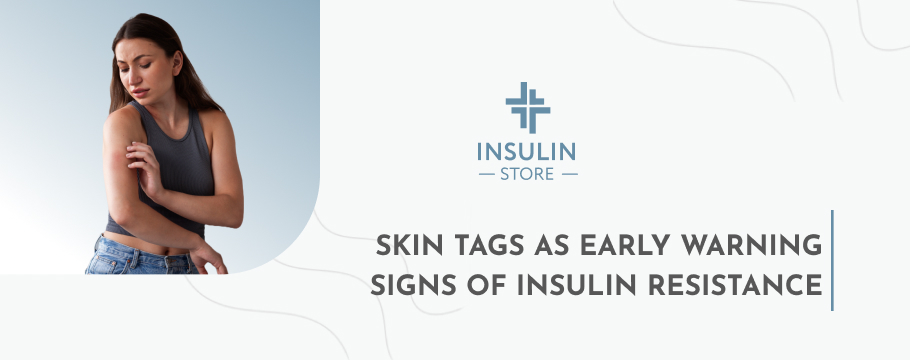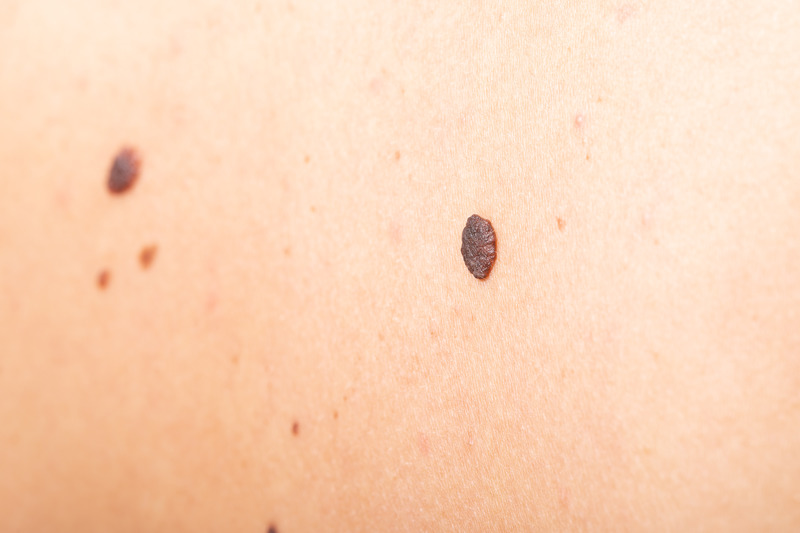Blog

Skin Tags as Early Warning Signs of Insulin Resistance
Skin rash is a sign of diabetes mellitus not so many people talk about nowadays; most individuals pay attention to more noticeable symptoms, such as dryness in the mouth or constant thirst. However, all risk factors should be considered for a timely diagnosis and the treatment beginning, so today, we would like to talk more about numerous skin tags that can be an early sign of insulin resistance. Please note that the presence of any symptoms discussed here doesn’t mean that you for sure have diabetes or suffer from dangerous skin infections, but still, it is better to visit a doctor to make sure nothing threatens your health. But it’s enough for the introduction; let’s jump into the topic.
Are Skin Tags a Sign of Diabetes?
Diabetes is a disease that affects many organs and body parts, and the dermis is not an exception. Developing skin tags is pretty standard for this issue, so it is better to raise awareness not to miss any dangerous conditions. So, let’s discuss the most common problems caused by impaired glucose metabolism and how they can affect one’s health.
Yellow/Brown Skin Patches
In the beginning, these patches usually look like small pimples that later develop into bumps with swollen, hard skin at the top. Surrounding skin is generally very shiny and thin, to the point where blood vessels are clearly visible. A wounded zone may be itchy and irritated, but this feeling usually comes and goes and thus doesn’t stay for a long time.
Thickening/Hard Skin
Usually, this issue affects fingers and toes, but it can also spread on the knees, ankles, elbows, etc., if not treated on time. Because of this skin tag dermis, people may notice thickening skin and stiffness in fingers, which makes it pretty hard to move them. If poorly controlled for a long time, it can make it pretty hard to use your hands properly.
Dark Skin Areas That Feel Like Velvet
Dark skin patches in the zone of the armpit, neck, groin, and others mean there is an increased risk of high blood sugar levels in an individual. Officially, this issue is called acanthosis nigricans, and it is a clear sign of prediabetes, so get in touch with your doctor if you notice it.
Blisters
Even though this symptom is infrequent, people with diabetes can often notice blisters, as well as swollen and hard skin that occur out of nowhere. It can be singular blisters, a group of small ones, or just a big one. Legs, hands, forearms, etc., are the most typical zones these problems appear on. Mostly, they are not painful but still cause a lot of discomfort to an individual.
Open Wounds
High glucose levels can lead to poor blood circulation and serious nerve damage, so diabetics require more time to heal even minor cuts. The most challenging area to heal is the feet, and a lot of patients suffer from the issue called diabetic ulcers, so we highly recommend checking your feet every day in order not to miss the moment when the wound starts to develop.
Shin Spots
The next issue is also related to the legs; diabetic dermopathy (an official name) is characterized by tiny depressions on the skin in the shin region. You may also rarely notice those in the thighs, arms, buttocks, and others.
Small Reddish-Yellow Bumps
At first, bumps on the skin surface are similar to pimples; however, unlike those, marks quickly become yellowish and can be pretty itchy. The usual areas for lumps are arms, thighs, buttocks, back of the knees, etc. These marks occur suddenly and should go away as soon as diabetes is properly controlled.
Raised Bumps of Red or Skin-Toned Color
This sign is pretty controversial and actively discussed among medical specialists, as a lot of people without diabetes mellitus can have such marks on their skin. They can be of various colors (the color of the skin, red, yellowish, and so on) and are often itchy.
Dry, Itchy Skin
High blood glucose levels usually cause an itchy rash on the dermis surface; we can say the same about the unusual dryness a lot of people with diabetes experience. In order to treat this condition, sugar levels in the body should be appropriately controlled, so talk to a medical professional to make sure a medication plan for you is still working.
Skin Tags
Skin tags are small parts of the dermis that hang from the stalk. Even though they are harmless, a lot of them can be a sign of diabetes type 2 in an individual, so we recommend paying attention to them and going to a doctor as soon as you notice them. If you are worried they can spoil your aesthetic looks, skin tag removal is a safe and pretty popular procedure that can completely fulfill your needs.
Yellowish Scaly Patches Around the Eyes
Dry, scaly skin is called xanthelasma and is typically caused by the high-fat level in the body. You shouldn’t be worried about it if you have a well-planned treatment schedule; however, if you notice this symptom, it can mean you should reconsider medical peculiarities with your doctor.
Why Am I Getting Skin Tags?
Diabetes mellitus can be characterized by various external signs, and diabetic ulcers (along with other skin issues) are among ones the easiest to notice in the beginning. You may be surprised to hear it, but one of three patients has marks on the dermis caused by blood sugar control problems, and it is recommended to check them just to know nothing has a harmful effect on your health.
The main reason of this unfortunate issue is mainly related to changes in the small blood vessels and poor circulation of the blood; our main recommendation here would be to have a careful examination of the wounded zone and ask a doctor for professional assistance to help the area to heal faster.
The Bottom Line About Skin Tags
Our bodies are genuinely remarkable constructions that can warn us about certain health issues even before we feel that anything is wrong. Just like that, certain skin tags can warn about diabetes mellitus in an individual in advance. We would recommend having regular appointments with your doctor (at least once a year, better once every six months) to make sure nothing is wrong with your health; and, of course, don’t forget about self-checking (you can do it in front of the mirror or ask somebody you trust about help). Pay more attention to your well-being, and stay safe! Insulin.Store is the best place where you can order insulin online safely.
